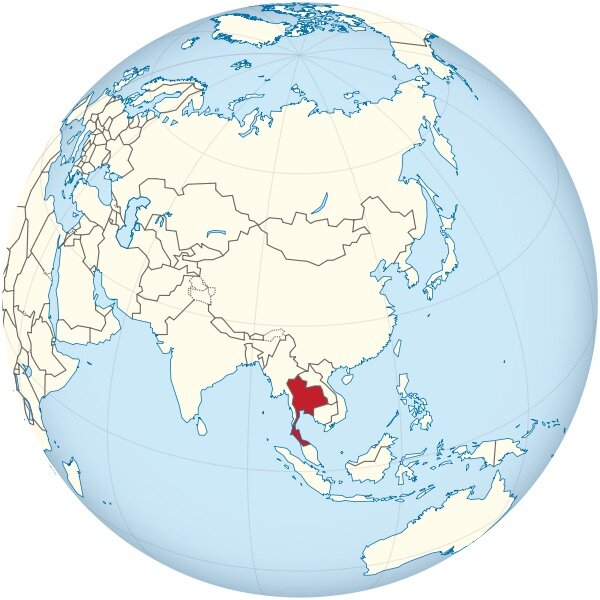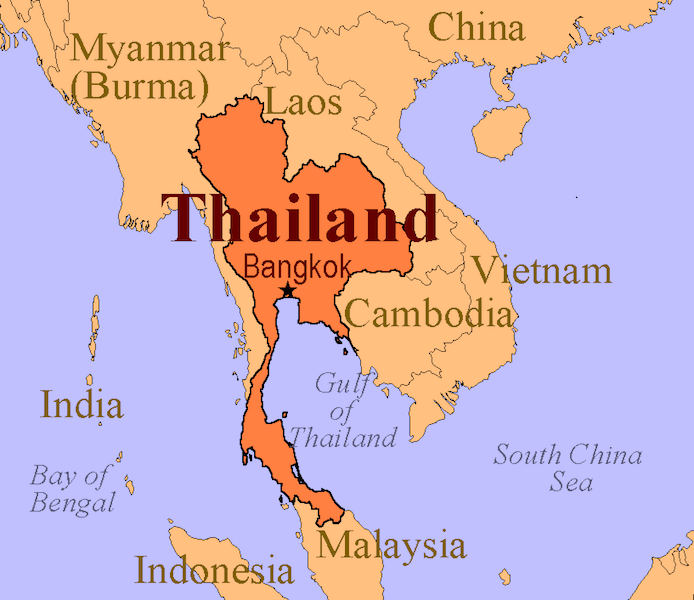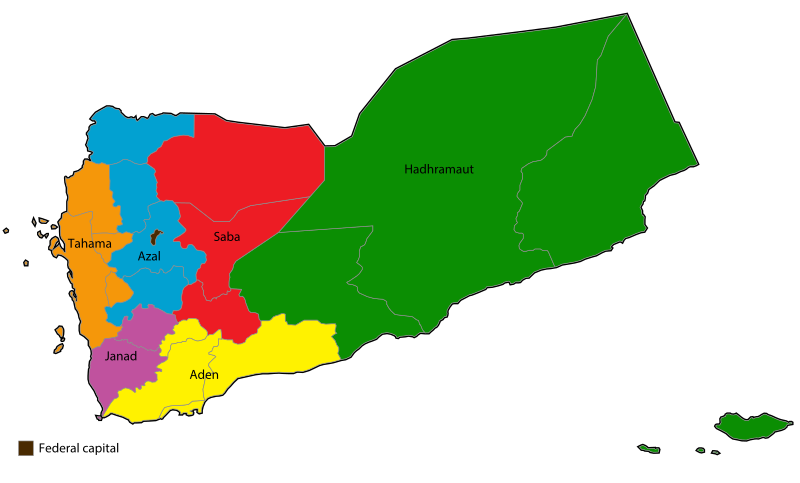This list of the World’s Hottest Cities has been formulated from each city's daily mean temperature. These temps are averages of the daily high and low over the entire year. The actual daytime temperatures, depending on the month, will be 4 to 18°F (2 to 10°C) higher than the daily average.
I have listed the 12 hottest cities in the World in reverse order. For a quick summary, reference the map above.
12) Port Sudan City, Sudan 83.12°F/28.4°C
Port Sudan -Sudan (Image Source)
Port Sudan is a city located on the coast of the Red Sea, on the eastern side of the country of Sudan. Its latitude primarily explains why Port Sudan receives incredibly high temperatures – it is located at around 19°N, meaning that the Sun is high in the sky all year round.
The city is situated in a dry, desert climate, allowing temperatures to reach much higher maxima than they would in a humid and wet setting. Port Sudan is also close to sea level, meaning that air temperatures do not decrease due to the lapse rate – it is also nestled around 12 miles (20 km) to the east of the Red Sea Hills mountain range, sheltering the city from easterly winds at times, preventing ventilation.
Hottest Month: August, with an average high-temperature of 40.2°C (104.4°F)
Coldest Month: January, with an average high-temperature of 26.8°C (80.2°F)
Humidity: The average annual relative humidity is 63.0%
The Meroe Pyramids are located in the North-East of Sudan near the banks of the Nile (Image Source: Flickr)
11) Manila, Philippines 83.12°F/28.4°C
Manila, Philippines
The Philippines is a tropical country with only two types of weather: Scorching hot or soaking wet and humid. Of the world’s top 12 hottest cities, Manila has the highest humidity and is even slightly muggier than Bangkok.
Hottest Month: April, with an average high-temperature of 33.5°C (92.3°F)
Coldest Month: January, with an average high-temperature of 29.6°C (85.3°F)
Humidity: The average annual relative humidity is 74.0% (highest on this list)
10) Bangkok, Thailand 83.6°F/28.6°C
Image Sources: Wikimedia Commons & Flickr
The tropical city of Bangkok is located less than 1,000 miles (1,609 km) away from the equator but due to the urban heat island (UHI) phenomenon and the humidity, Bangkok feels even hotter than the thermostat, which is already scorching hot and humid.
The metropolis of Bangkok
Hottest Month: April, with an average high-temperature of 35.4°C (95.7°F)
Coldest Month: December, with an average high-temperature of 31.7°C (89.1°F)
Humidity: The average annual relative humidity is 73% (2nd highest)
Population: 10.72 million residents (plus another 1-million tourists, pre-COVID)
9) Ouahigouya, Burkina Faso 83.5°F/28.6°C
(Image Source)
Ouahigouya is a city located in northern Burkina Faso, the hottest country on Earth. Its incredible heat is due to its low latitude, a fairly low altitude (~ 985 ft/300 m), and its proximity to the Sahara Desert, the border of which is just to the north of the city.
Its location in the northern Sahel region means that the dry season has a longer length than more Equatorial places, meaning that incredibly high temperatures occur around much of the year.
Nazeing national park in Burkina Faso
However, the short wet season is also rather hot and humid, increasing the minimum temperatures during this period. It is also a long distance from the nearest sea or a large body of water, resulting in a lack of any refreshing sea breezes.
Hottest Month: April, with an average daytime high-temperature of 106.5°F | 41.4°C
Coldest Month: January is the coldest month, with an average daytime high-temperature of 91.8°F | 33.2°C
Humidity: The annual average relative humidity of 49%
8) Aden, Yemen 84.4°F/29.1°C
Image Sources: Both from (left) Wikimedia Commons & (right) Wikimedia Commons
Aden is a port city that is situated in the southwest of Yemen. Located on the southern edge of the Arabian Desert, it receives very little precipitation, with sunny days and clear blue skies occurring pretty much all year round, with very little interruption from cloud cover.
This causes the temperatures – particularly between May and September – to reach a rather high maxima. Aden is also located at around 12°N, meaning that the Sun is always high in the sky. Since it is a port city, Aden also has a low altitude, with the lapse rate allowing for higher temperatures than it would for areas located at higher altitudes.
Aden, Yemen
Hottest Month: June, with an average high-temperature of 36.6°C (97.9°F)
Coldest Month: January, with an average high-temperature of 28.5°C (83.3°F)
Humidity: The average annual relative humidity is 70%
7) Niamey, Niger 84.7°F/29.3°C
(Hungerford)
Niger is the 18th hottest nation on Earth, and is famously known as the “Frying Pan of the World.” Referred to as one of the world’s hottest cities, Niamey is located on the western side of the African country of Niger.
It owes its heat partly to its low latitude, with an overhead Sun allowing the city to experience its full energy. Its location in the northern Sahel region also allows the city to receive a long dry season between October and May, during which practically no rain falls, allowing for incredibly hot temperatures to occur.
The wet season is rather short and produces rather hot and humid weather. Niamey is located within the Iullemmeden Basin, meaning that it has a comparatively low altitude than other parts of the Sahel region.
The skyline in Niamey, Niger
Hottest Month: April, with an average maximum temperature of 105°F | 41°C
Coldest Month: January, with an average maximum temperature of 90°F | 32°C
Humidity: The average annual relative humidity is 42%
Population: 1.027 million
6) Lodwar, Kenya 84.7°F/29.3°C
Lodwar, located in north-western Kenya (Image Source: Wikimedia Commons)
Lodwar is a large town located in north-western Kenya. It has an incredibly hot and dry semi-arid climate all year round, with a brief wet season from late March to early May.
Its 3°N latitude means that the Sun is almost directly above throughout the year, contributing to the constantly high daily maxima recorded here. The dry savannah-type landscape around the town means that evaporation is very low, preventing cloud formation and allowing for high amounts of sunshine, which in turn increases the maximum temperatures even further.
Furthermore, Lodwar is located within a large basin – the Great Rift Valley – meaning that the town is significantly hotter than surrounding areas that have a higher elevation.
Lodwar, Kenya (Image Source: Wikimedia Commons)
Hottest Month: February, with an average high-temperature of 36°C (96.8°F)
Coldest Month: July, With an average high-temperature of 32.1°C (89.8°F)
Humidity: The average annual relative humidity is 44%
5) Abéché, Chad 84.9°F/29.4°C
Abéché is located in the eastern part of the Sahelian zone (orange-yellow)
Resting within sub-Saharan Africa, it is no surprise that Abéché receives very high temperatures. This is largely due to a lack of evaporation from the vast dry savannah that surrounds the city, preventing the formation of clouds, and allowing the Sun to shine on most days.
During its short wet season, maximum temperatures are reduced, but it remains rather hot and humid. Its low latitude also allows the sun to appear high in the sky around the year, albeit particularly from March to September. Its incredible distance from the nearest sea, or body of water, also means that there is a complete absence of cooling sea breezes.
9 of the 10 hottest cities in the World are in this region, with the majority being located in or near the Sahel region of Africa.
Hottest Month: April is the warmest month, with an average high-temperature of 40.2°C (104.4°F)
Coldest Month: August, with an average high-temperature of 32°C (89.6°F)
Humidity: The average annual relative humidity is 34.3%
4) Khartoum, Sudan 85.8°F/29.9°C
Nile river in Khartoum, Sudan
Surrounded by the vast Sahara Desert on its northern and western sides, and with the semi-arid Sahel region to its south, Khartoum is the world’s 4th hottest city, experiencing exceptionally high temperatures.
Despite being at the confluence of both the White and Blue Nile rivers, the landscape around the city is incredibly arid – this limits evaporation, preventing cloud formation, and subsequently allowing scorching sunshine for much of the year.
Khartoum also lies within a basin (at an altitude of around 1,150 ft | 350 m above sea level), which allows for hotter temperatures to occur in this region than they would in surrounding areas with a higher altitude.
Hottest Month: May, with an average high-temperature of 41.9°C (107.4°F)
Coldest Month: January, with an average high-temperature of 30.7°C (87.3°F)
Humidity: The average annual relative humidity is 28.8%
3) Djibouti City, Djibouti 85.8°F/29.9°C
Djibouti City
Djibouti City is a port that is located on the eastern side of the country of Djibouti, on the coast of the Gulf of Aden. It is one of the world’s hottest urban areas – this is mainly due to its adjacent desert landscape.
Near-constant high pressure over the region allows the sun to shine almost continuously, allowing for a lack of cloud development, and thus for very high maxima to be recorded. Djibouti City’s sea level altitude further increases the ability for high temperatures – by contrast, mountain areas within the interior of Djibouti record slightly lower average temperatures, sometimes by more than 6°C.
Hottest Month: July, with an average high-temperature of 37.9°C (100.2°F)
Coldest Month: January, with an average high-temperature of 26.3°C (79.3°F)
Humidity: The average annual relative humidity 61.0%
2) Bosaso, Somalia 86°F/30.0°c
The port city of Bosaso is situated on the northern coast of Somalia, overlooking the Gulf of Aden. Located very close to the Equator, the city is incredibly dry and sunny all year round, with the lack of a defined wet season.
Therefore, since cloud cover is rare, daily maximum temperatures are always rather high – particularly between May and September, when the sun is more or less directly overhead.
The Gulf of Aden is also rather warm all year round (yearly average 83°F/28°C), preventing temperatures in the city from dropping as much overnight as they would in inland desert areas. Bosaso’s low altitude also allows high temperatures to occur here.
Bosaso, Somalia (Image Source: Wikimedia Commons)
Hottest Month: June and July, with an average high-temperature of 41°C (105.8°F)
Coldest Month: January, with an average high-temperature of 29°C (84.2°F)
Humidity: The average annual relative humidity 62.0%
1) Assab, Eritrea 86.9°F/30.5° c
Image Source: Wikimedia Commons
Assab is a port city that is located in southern Eritrea, on the coast of the southern Red Sea. Like many cities that are within desert climate zones, near-constant daily sunshine allows temperatures to reach incredible maxima during the day, aided by the lack of cloud development.
Asmara - the capital city and largest city in Eritrea (about 485 miles away from Assab)
Due to its latitude (13°N), not only does this city experience near-constant high pressure all year round, but it is also under the influence of the Sun’s strong rays. Like with the Gulf of Aden, the Red Sea is also rather warm, preventing temperatures from decreasing overnight as much as they would inland. The low altitude of the region also facilities for incredibly high temperatures.
Hottest Month: July, with an average high-temperature of 41.2°C (106.2°F)
Coldest Month: January, with an average high-temperature of 31.3°C (88.3°F)
Humidity: The average annual relative humidity is 58%
Average dewpoint in June: 84°F (29.3°C) which is the highest monthly dewpoint for any city in the world. So in addition to being hot, this city is also insanely humid during June.
Valentina is a guide for Pedal Chile and is our geology expert. Valentina has been in love with geology ever since she first saw Villarrica glowing in her native country of Chile. Valentina was born and raised in La Patagonia, which probably explains her affinity for adventuring. Favorite season: Austral Summer
Related articles from Pedal Chile
What is the hottest temperature ever recorded?……and it’s not Death Valley
World’s Coldest temperature?…so cold you can’t even breathe
Sources & References for “World’s Hottest Cities”
“AB.” Wikipedia, Wikimedia Foundation, 26 Feb. 2019, en.wikipedia.org/wiki/Ab.
Babikir, Mahamat Hassane, et al. “Estimation of Direct Solar Radiation of Chad.” Energy and Power Engineering, vol. 10, no. 5, 9 May 2018, pp. 212–225, www.scirp.org/journal/paperinformation.aspx?paperid=84809, 10.4236/epe.2018.105015.
“Bosaso.” Wikipedia, 10 Apr. 2021, en.wikipedia.org/wiki/Bosaso.
Carlowicz, Michael. “Where Is the Hottest Place on Earth?” Earthobservatory.nasa.gov, 5 Apr. 2012, earthobservatory.nasa.gov/features/HottestSpot.(Image Source: opening photo adapted from this map)
“Darwin.” Wikipedia, 16 Dec. 2019, en.wikipedia.org/wiki/Darwin.
“Djibouti (City).” Wikipedia, Wikimedia Foundation, 24 Jan. 2019, en.wikipedia.org/wiki/Djibouti_(city).
“Gulf of Aden.” Wikipedia, Wikimedia Foundation, 8 Oct. 2019, en.wikipedia.org/wiki/Gulf_of_Aden.
Hungerford, Hilary B. “Water, Cities, and Bodies: A Relational Understanding of Niamey, Niger.” Kuscholarworks.ku.edu, 31 May 2012, kuscholarworks.ku.edu/handle/1808/10642.
“Khartoum.” Wikipedia, Wikimedia Foundation, 21 Sept. 2019, en.wikipedia.org/wiki/Khartoum.
“List of Cities by Average Temperature.” Wikipedia, 10 June 2020, en.wikipedia.org/wiki/List_of_cities_by_average_temperature.
“Lodwar.” Wikipedia, 18 Mar. 2021, en.wikipedia.org/wiki/Lodwar.
“Manila.” Wikipedia, Wikimedia Foundation, 8 Sept. 2019, en.wikipedia.org/wiki/Manila.
“Ouahigouya.” Wikipedia, 18 Feb. 2021, en.wikipedia.org/wiki/Ouahigouya.
Wikipedia. “Aden.” Wikipedia, 27 Apr. 2021, en.wikipedia.org/wiki/Aden.
Wikipedia Contributors. “Assab.” Wikipedia, Wikimedia Foundation, 7 Mar. 2019, en.wikipedia.org/wiki/Assab.
Wikipedia Contributors. “Bangkok.” Wikipedia, Wikimedia Foundation, 13 Feb. 2019, en.wikipedia.org/wiki/Bangkok.




































